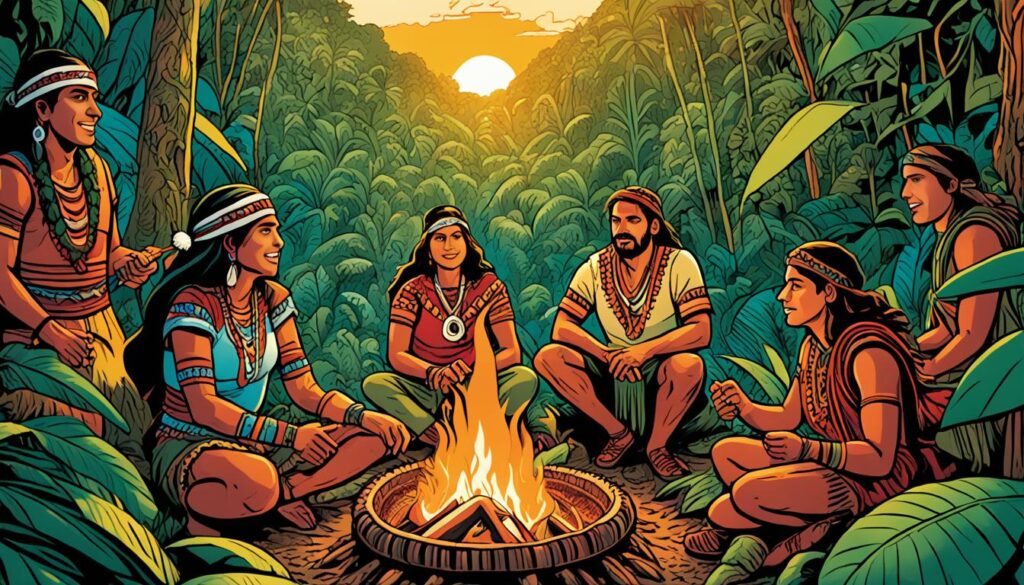Did you know that there are approximately 217 indigenous languages spoken in Brazil alongside Portuguese, the country’s official language?
One of these fascinating indigenous languages is the ApIngarikó language, spoken by a community in Brazil. While Portuguese is widely spoken by the majority of people in the country, it is crucial to recognize and preserve the ApIngarikó language to celebrate Brazil’s diverse cultural heritage.
Are you interested in discovering more about the ApIngarikó language, learning it, and exploring resources to dive deeper?
Linguistic Diversity in Brazil
Brazil is a country renowned for its rich linguistic diversity. With approximately 228 languages spoken throughout the nation, Brazil stands as a testament to the multicultural nature of its society. While Portuguese remains the official language, encompassing about 99% of the population, there are numerous other languages that add to the linguistic tapestry of Brazil.
In addition to Portuguese, Brazil boasts a wide range of indigenous languages. With approximately 217 languages spoken by indigenous communities in different regions of the country, Brazil’s indigenous languages are an integral part of its cultural heritage.
Furthermore, Brazil is home to a variety of immigrant languages brought in by different waves of migration. These languages represent the diverse backgrounds and ancestries of Brazilian citizens. Among the immigrant languages spoken in Brazil are English, Spanish, and German, as well as Italian, Brazilian Venetian (Talian), and Caló. This vibrant blend of languages reflects Brazil’s unique cultural mosaic.
Additionally, regional dialects play a significant role in Brazil’s linguistic landscape. Due to the country’s vast size and regional differences, distinct dialects have emerged in various parts of Brazil. These dialects not only add to the linguistic diversity but also contribute to the cultural identity of different regions.
Linguistic Diversity in Brazil
| Language | Type |
|---|---|
| Portuguese | Official Language |
| Indigenous Languages | Approximately 217 |
| Immigrant Languages | English, Spanish, German, Italian, Brazilian Venetian (Talian), Caló |
| Regional Dialects | Various |
The linguistic diversity of Brazil reflects the country’s commitment to preserving its cultural heritage and recognizing the contributions of various communities. It is an invaluable asset that fosters a sense of inclusivity and appreciation for different languages, further enriching the cultural fabric of Brazil. The preservation of indigenous languages, the recognition of immigrant languages, and the celebration of regional dialects are all vital in maintaining Brazil’s linguistic diversity for future generations.
Indigenous Languages of Brazil
Brazil is renowned for its linguistic diversity, with numerous indigenous languages spoken throughout the country. These languages are not only a means of communication but also a testament to the rich cultural heritage of Brazil. Let’s explore some of the notable indigenous languages spoken by communities in Brazil:
- Kaingang language: Spoken by the Kaingang nation, the Kaingang language is an important part of their cultural identity.
- Ticuna language: The Ticuna language is spoken not only in Brazil but also in Colombia and Peru by the Ticuna people. It serves as a link between these communities and their ancestry.
- Kaiwá language: The Kaiwá language is spoken by the Kaiwá people, who inhabit parts of southern Brazil. It plays a significant role in preserving their traditions and indigenous knowledge.
- Tenetehára language: The Tenetehára language is spoken by the Tenetehára people in northeastern Brazil. Its preservation is crucial for maintaining their distinct cultural heritage.
- Macushi language: Spoken by the Macushi people in the northern regions of Brazil, the Macushi language reflects their close connection with the land and nature.
- Terena language: The Terena language is spoken by the Terena people in central-western Brazil. It is not only a means of communication but also a source of cultural pride.
- Xavante language: The Xavante language is spoken by the Xavante people in the state of Mato Grosso. It embodies their unique worldview and spiritual beliefs.
- Tucano language: Spoken by the Tucano people in the Amazon rainforest, the Tucano language is vital for preserving their cultural traditions and rituals.
- Mawé language: The Mawé language is spoken by the Mawé people in the Amazonas state of Brazil. It conveys their deep knowledge of the forest ecosystem and traditional practices.
Efforts should be made to support the preservation and revitalization of these indigenous languages. They are invaluable treasures that contribute to Brazil’s linguistic diversity and cultural heritage.

| Indigenous Language | Spoken By | Region |
|---|---|---|
| Kaingang language | Kaingang nation | Southern Brazil |
| Ticuna language | Ticuna people | Brazil, Colombia, Peru |
| Kaiwá language | Kaiwá people | Southern Brazil |
| Tenetehára language | Tenetehára people | Northeastern Brazil |
| Macushi language | Macushi people | Northern Brazil |
| Terena language | Terena people | Central-Western Brazil |
| Xavante language | Xavante people | Mato Grosso |
| Tucano language | Tucano people | Amazon rainforest |
| Mawé language | Mawé people | Amazonas state |
Second Languages in Brazil
In addition to Portuguese, many Brazilians also speak a second language. English and Spanish are among the most commonly studied and spoken foreign languages in Brazil. Brazil’s vibrant cultural landscape has been shaped by its history of immigration, resulting in a diverse range of immigrant languages spoken throughout the country. Let’s explore the prominent second languages in Brazil:
English in Brazil
English is widely taught in schools and universities across Brazil and has become the primary second language for many Brazilians. It is viewed as a valuable skill for international communication, business, and tourism. English proficiency is particularly prevalent in larger cities and tourist destinations.
Spanish in Brazil
Due to its geographic proximity to Spanish-speaking countries, Spanish is another commonly spoken second language in Brazil. Spanish language skills are especially beneficial for trade and tourism in the Latin American region. Many Brazilians have acquired Spanish proficiency through exposure to neighboring countries and cultural exchange.
German in Brazil
German has a significant historical presence in Brazil, stemming from the large wave of German immigration during the 19th and early 20th centuries. Today, German-speaking communities can still be found in various regions of Brazil, particularly in the southern states. While German may not be as widely spoken as English or Spanish, it continues to play a vital role in preserving the cultural heritage of these communities.
Other Immigrant Languages in Brazil
Brazil’s multicultural background is further reflected in the presence of other immigrant languages. Italian, Brazilian Venetian (Talian), and Caló, a language spoken by the Brazilian Romani community, are among the immigrant languages spoken in Brazil. These languages serve as a testament to the diverse origins of Brazil’s population and contribute to the country’s rich linguistic tapestry.
In conclusion, the ability to speak multiple languages is highly valued in Brazil, with English and Spanish being widely spoken as second languages. The historical influence of German and the presence of other immigrant languages add to Brazil’s linguistic diversity and cultural heritage.
Conclusion
The ApIngarikó Language, along with the diverse range of indigenous and immigrant languages spoken in Brazil, is an integral part of the country’s linguistic diversity and cultural heritage. Preserving these languages is of utmost importance to celebrate and honor Brazil’s rich cultural tapestry.
Recognizing the significance of language preservation, efforts should be made to support language learning initiatives, create valuable resources, and promote linguistic preservation programs. By doing so, we can ensure that future generations have the opportunity to learn, speak, and appreciate the ApIngarikó Language and other languages that contribute to Brazil’s vibrant cultural mosaic.
Embracing linguistic diversity not only contributes to the enrichment of Brazil’s cultural heritage, but also fosters a sense of inclusivity and respect for all linguistic communities. By valuing the ApIngarikó Language and other languages spoken in Brazil, we build a more comprehensive understanding of our shared humanity.
FAQ
Why is it important to learn the ApIngarikó Language?
Learning the ApIngarikó Language is essential for celebrating the cultural heritage of Brazil and preserving the linguistic diversity of the country.
Are there online courses available to learn the ApIngarikó Language?
Currently, there may not be many online courses specifically focused on learning the ApIngarikó Language, but there are resources available for individuals interested in studying indigenous languages of Brazil.
Where can I find resources to learn the ApIngarikó Language?
Resources for learning the ApIngarikó Language may be limited, but it is advisable to explore language preservation initiatives, local community organizations, and universities that specialize in indigenous languages for potential resources.
How many ApIngarikó Language speakers are there?
The exact number of ApIngarikó Language speakers is not readily available, but it is spoken by a community in Brazil.
Is there an ApIngarikó Language dictionary?
Currently, there may not be a comprehensive ApIngarikó Language dictionary widely available. However, local language experts and community organizations may have resources or materials to assist in learning the language.
